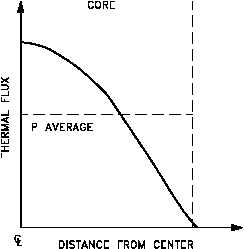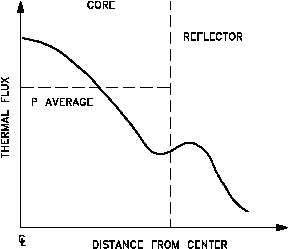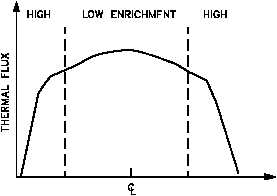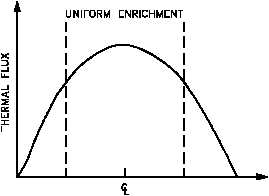REACTOR OPERATION
DOE-HDBK-1019/2-93
Reactor Theory (Reactor Operations)
Figure 4 shows the general effect of reflection in the thermal reactor system where core power
is proportional to the thermal flux. Notice that a reflector can raise the power density of the
core periphery and thus increase the core average power level without changing the peak power.
As illustrated in Figure 4, the thermal flux in the reflector may actually be higher than that in
the outermost fuel since there are very few absorptions in the reflector.
Varying the fuel enrichment or fuel concentrations in the core radially, axially, or both, can
Figure 4 Neutron Radial Flux Shapes for Bare and Reflected Cores
readily be used to control power distribution. The simplified example illustrated in Figure 5
shows the effect of using a higher enrichment in the outer regions of the core. Varying fuel
concentrations or poison loading for flux shaping is frequently referred to as zoning. In the
example illustrated the large central peak is reduced, but the average power level remains the
same.
Figure 5 Effect of Non-Uniform Enrichment on Radial Flux Shape
NP-04
Rev. 0
Page 26








